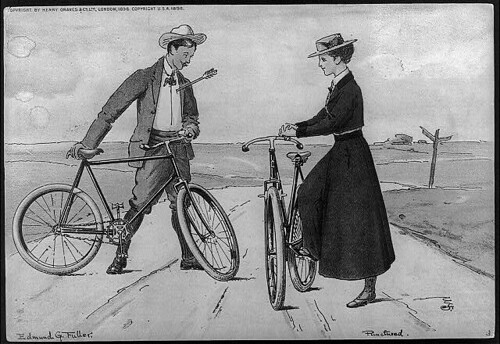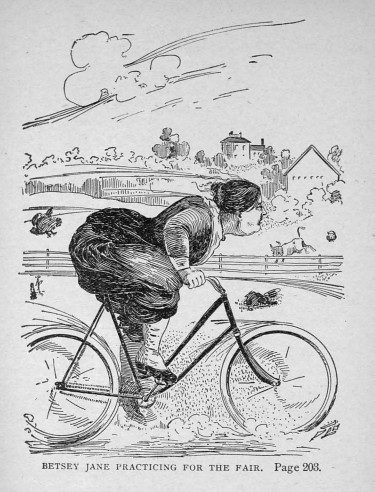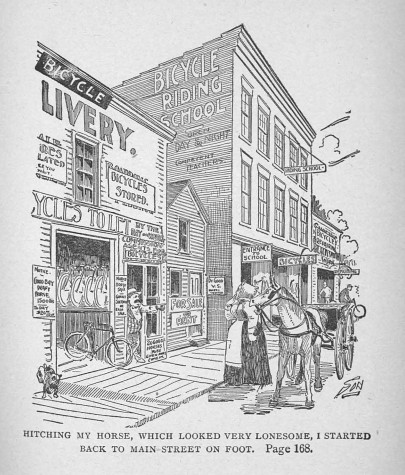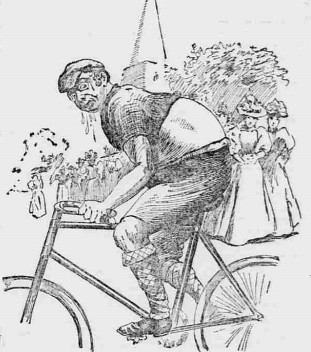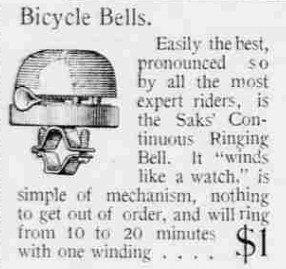Recently I found issues of The Referee and Cycle Trade Journal: a Weekly Record and Review of Cycling and the Cycle Trade available online
Perusing the first issue in a vast 1,400 page plus bound volume of issues (the weekly issue for May 7, 1896 to be exact - Volume 17, Number 1) I found several more exotic examples of tandem (or tandem like?) bicycles whose designs do not come down to us today.
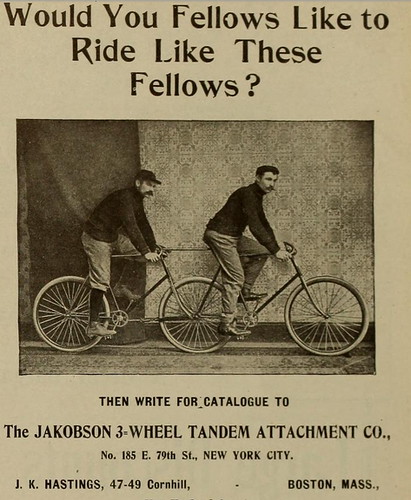
What's wrong with this design?
At first glance this is much like a "trail-a-bike" of today, where the back end of a basic bicycle, missing the front wheel and any steering, is attached to the seat post of the "lead" bicycle as kind of trailer (with seat, non-steering handlebars, and pedals and drive train for the rear wheel). The big difference is that upon close examination of this photo it is clear that in this design the bike in the rear follows the front bike in a fixed straight line, not like a trailer. Crazy.

A slightly more practical design
Here we have a full page ad for a "do it yourself" version of the side-by-side tandem bicycle. Most of the full page ads in the publication are from larger companies, so they must have been trying to get people's attention.

Closer view - that it is shown with youngsters is an interesting choice
This is not such a bad design if I understand correctly how it would work - it appears that there are connections for the steering so that the steering is "coordinated." The statement is that this "coupler" is "flexible" in some way, but it seems doubtful that one would lean into a turn, so where is the flexing? But as a way to get a new adult rider on a bike for a short ride, it seems OK. The weight seems a little daunting - presumably when they say "adds only five pounds to the weight of each machine" it means the various coupling bits and pieces total ten pounds - so two 25 pound bikes attached in this way would run up to 60 pounds. Hmm.
Again, not a design that we see today.
